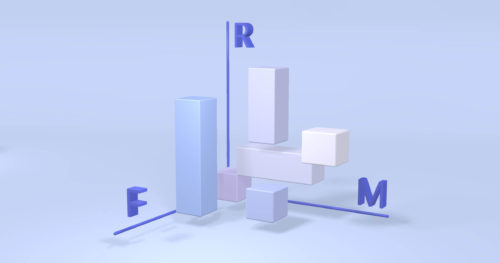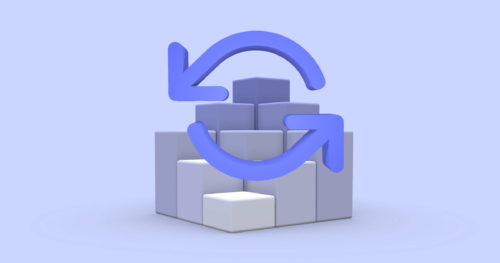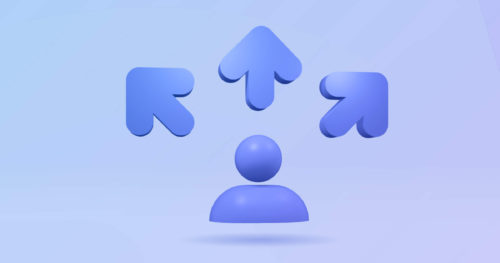Do you want to steer clear of the competition? Start customizing your marketing messages and customer experience to best fit specific customer segments. The more personalized is customers’ experience with your brand from the moment they find out about you, the higher is their chance to purchase and become your loyal customers.
We are past the times when your marketing efforts would end up thinking about “what ifs.” Ecommerce companies nowadays rely on customer data to accurately predict the customer pain points, resolve issues at the start and focus on bringing more potential customers on board.
Customer segmentation enables eCommerce businesses to understand their customers better and target them with personalized campaigns. Using automated rules and integration with CRM, marketers can create targeted messages that resonate with the right people.
What Is a Customer Segmentation Software?
Customer segmentation software is a tool that groups your customers based on certain similarities in their demographics, behavior, or any other characteristics.
It can help companies better understand their clientele and its composition. Treating your audience as heterogeneous groups with different interests and needs lets you target marketing campaigns more precisely, increase conversion rate, and provide a more personalized customer experience.
What Types of Customer Segmentation Possibilities Are There?
One of the biggest problems with many retailers is their inability to segment customers according to various business needs. That’s usually caused by a lack of either data or tools and skills to analyze it.
Online stores are in a way more favorable position than their offline counterparts. They have lots of customer data by default, even if they do not collect it intentionally for analysis.
What possibilities for segmentation does this data give you? Let’s dive deeper into it.
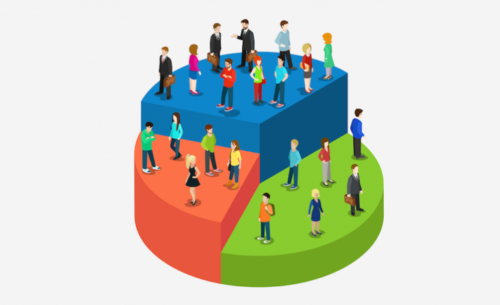
1. Demographic segmentation
Demographic segmentation is a way to categorize buyers based on basic demographic information. Demographic variables are those shared by a group of people, rather than specific to one individual. These variables include:
- Age;
- Sex;
- Education level;
- Marital status;
- Race;
- Household income;
- Nationality.
Marketing teams like this type of segmentation because it is easily accessible and, most importantly, — it’s free. Another benefit of segmenting demographics is that it is straightforward to measure.
Be aware, however, that the segmentation process has its limitations. While it seems relatively straightforward to distinguish men 50+ from those younger than that, it is crucial to understand that such a distinction works with some assumptions — and when these are flawed, the result can be more damaging than helpful. For example, not all men 50+ like fishing, just as not all households making over $300,000 enjoy traveling to luxurious destinations.
2. Geographic segmentation
Geographics study your customers based on location, affecting more physical interactions in the market, and consumers sharing similar areas may share similar preferences. With behavioral segmentation, geographic segmentation is excellent for pairing when designing marketing campaigns.
You can segment customers by:
- Zipcode;
- City of residence;
- Country;
- Advanced (like Population density, for example).
However, it’s not a good idea to apply only geographic segmentation, as it may miss out on new opportunities. Instead, marketers can use this type of segmentation in tandem with others, such as behavioral targeting and psychographic segmentation.
3. Behavioral segmentation
Behavioral segmentation is one of the most popular forms of customer profiling (we’ve written an article about behavioral segmentation in marketing here). It reveals how customers think and act as they engage with a brand or product, shaping how brands and companies can best reach their target audience. It’s an essential tool for getting more out of your marketing spend.
This type of segmentation reveals specific patterns in users’ behavior. Depending on your goals, it may show what visitors are more likely to turn into customers, which of them need additional incentivization with a discount or point out customers that are about to leave.
There are a few reasons why many eCommerce websites use it:
- Behavioral data is the most unbiased;
- Behavioral data is relatively easy to collect;
- Behavioral segmentation allows to predict and anticipate behavior.
4. Psychographic Segmentation
Psychographics is a method of classifying people based on non-physical attributes. It’s like creating a class of business suits and another for t-shirts, but much more profound and more powerful.
Psychographic segmentation allows companies to create subgroups within their customer base for targeted marketing campaigns. Let’s see which things psychographic segmentation takes into account:
- Habits;
- Hobbies;
- Political views;
- Lifestyle;
- Social Status.
Why Is the Segmentation of Customers Important?
Customers are the essence of the success of any business, so knowing their wants and needs is critical to a company’s prosperity. Customer segmentation splits a heterogeneous audience into more alike groups. Understanding the unique needs and particularities of each group, companies can personalize their marketing while staying efficient.
So, what are the benefits of customer segmentation, and how does that benefit your marketing team? Let’s see.
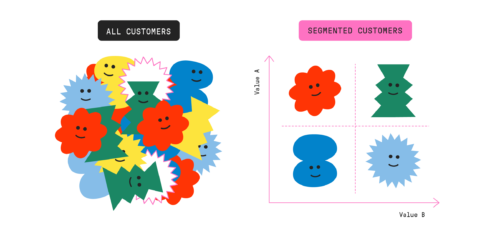
Improve Marketing Campaigns
Up to 80% of users ignore paid ads, which ultimately means that throwing Benjamins to get more website visitors won’t make the cut. However, dividing customers by segments could potentially save you a lot of money and drive more revenue. Identifying your best-fit audience for a particular campaign could turn out to be a decisive factor when marketing your products.
Increase the quality of Your Leads
By creating engaging and targeted marketing campaigns, you’ll be able to reach out to more customers and convince them to pay extra money for your product. A well-timed message relevant to a customer’s need will always positively affect the bottom line.
Increase Your Brand Awareness
SaaS and eCommerce companies rely heavily on their brand awareness. When segmenting your consumers, you increase your customer satisfaction, improving customer retention. Tailor-made messages could reach your top 10% of clients (whales) that account for 70% of your sales.
How Do Customer Segmentation Software Solutions Work?

The customer segmentation software is an essential tool in understanding the clients of your business. By classifying their data based on specific demographic and behavioral traits, you can learn more about each group that makes up your customer base.
This information can, in turn, be used to develop a better overall understanding of the customer, leading to increased customer retention and a more targeted marketing approach.
Customer segmentation tools collect, analyze, and integrate data to provide a unified picture of your leads, current clients, and other valuable insights.
How to Choose the Software for Your Business?
Choosing the right customer segmentation tool is crucial for your success in marketing. But what should you consider first when picking the perfect software solution?
Ease of use
Many marketing software platforms are too bulky or complex to use. It’s not a big deal for enterprises, as they usually have resources to teach their employees or hire professionals who know how to work with a complex solution. Small and medium businesses can rarely afford such a luxury and will rather look for a tool that is user-friendly, intuitive, and focused on challenges that similar companies have.
Scalability
Good software will be simple but robust enough to scale with you as your company grows. If the software has several pricing plans, make sure that at least the highest one can handle the size of the business you aim into.
Organization
Good software serves as a master record of all customer details. You can plan your actions, ensuring that you and your colleagues can share insights about the next steps in your marketing vision.
Customizability
A great customer segmentation tool should be customizable. It’s essential to have out-of-the-box options when you first start with customer segmentation. With more experience and a better understanding of your segmentation goals, you may need more flexibility.
The Best Customer Segmentation Tools on the Market
We have already mentioned what is needed for a segmentation tool to deliver high-quality results. But which are the best performers in the category? Let’s find out.
Google Analytics

Google Analytics is a premier way for brands to monitor consumer online behavior and action. It can also track multiple metrics, such as how long people are on a site and where they are clicking. Business owners and other stakeholders can use these metrics to improve marketing campaigns, drive website traffic and retain visitors.
Google Analytics is a potent tool that most people don’t utilize, and it’s also complicated to use and understand. Most professionals won’t have time or training to make sense of the mountains of data it tracks. As a result, you might pull data that is either useless or too hard to digest.
Mailchimp

Mailchimp’s audience targeting allows you to filter email contacts into segments. The segmentation tool is comprehensive, letting you create a segment by selecting one condition or combining up to five conditions with either positive or negative relationships.
The limitations of Mailchimp include the number of contacts you can add to a single list and the lack of client-side scripting. Moreover, Mailchimp focuses only on email marketing and doesn’t cover multiple channels.
Verfacto
Verfacto is a powerful customer segmentation software that strategically enables merchants to segment customers based on their past, present, and future shopping history. Based on marketing goals from the outset, eShops can see who is likely to bring them more revenue.
Moreover, they will know who will make repeat purchases who will spend more during the first transactions. Even customers are likely to spend more money on average during every transaction.
It is reasonably priced and has a free plan for small merchants.
Adobe Analytics
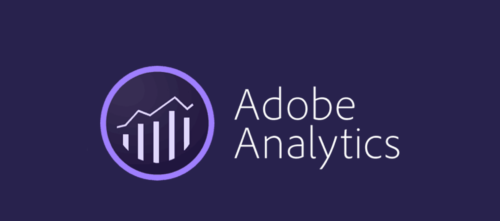
Adobe Analytics excels at providing in-depth customer segmentation features. The service offers multiple features, including advanced reports and the ability to read data in real-time. Its broad range of data enables users to make comprehensive analytics reports that provide the insights necessary to achieve their marketing goals.
The problem is — it is overkill for most people. While it can help you build customer segments with ease, the steep learning curve can discourage many people who try to get hold of the platform.
Segment

Segment is a hub for collecting customer data. You can combine disparate data sources into Segment and gain a comprehensive view of your customers. Segment excels at managing enterprise-scale clients and is an excellent choice for companies with numerous products or services.
But it is far from perfect, as with each software. At first sight, the prices are not steep. However, once you start generating traffic, you will begin to pay way more than you have expected. On top of that, loading that much data will slowly but surely reduce your speed.
Summary
Most companies know that a marketer’s job is never done for the business. With new products, old products, and constant competition, it can be challenging for marketers to establish a sales funnel that gives them the advantage. That’s why many companies turn to customer segmentation tools, which identify patterns and save companies marketing costs and give an excellent return on investment.
FAQs
How Do I Segment My Customers?
You create customer segments by grouping clients by applying different criteria: demographic, geographic, behavioral, and psychographic.
Should You Use Customer Segmentation Software?
It’s possible to do basic customer segmentation manually. However, you will need a special tool to perform a more advanced segmentation like behavioral or combine multiple data sources.
If you’re just starting as a small eCommerce business and still don’t have the budget to use one of these softwares, we recommend you to wait a little while, or maybe start with a free plan like the one from Verfacto.
Are Segmentation Tools Hard to Understand?
Reading customer data and processing it afterward might require a bit of a learning curve. However, companies providing segmentation software often offer learning materials to catch up with the platform quickly.
What Are the Most Popular Tools Used for Customer Segmentation?
The most popular tool is Google Analytics, followed by Segment and Adobe Analytics. However, there are better alternatives for small and medium businesses.
Can You Easily Migrate from One Software to Another?
It is possible to migrate from one platform to another. Ensure you have backed all of your customer data beforehand, or otherwise, you risk losing all of your progress.

